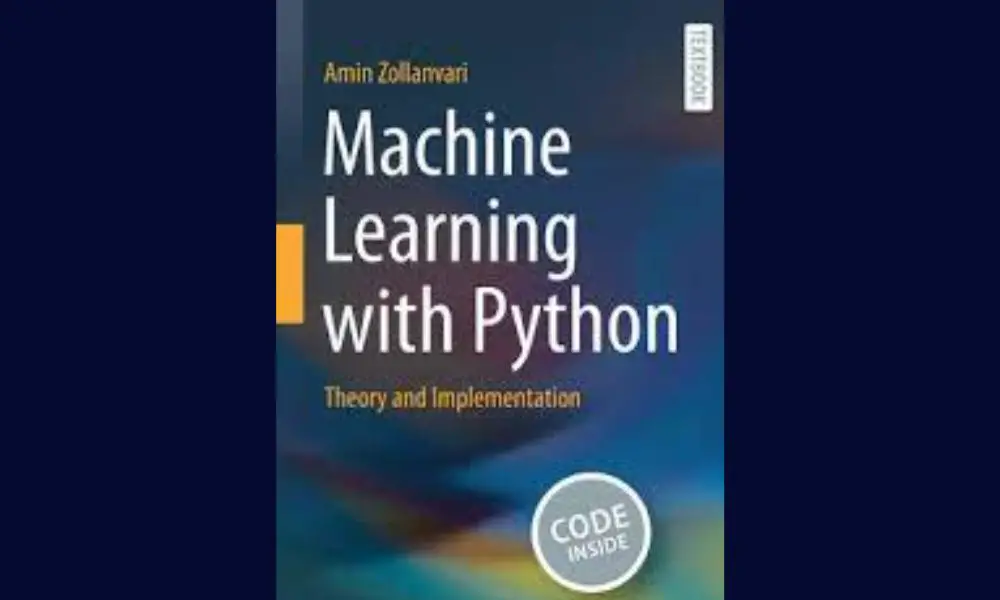Machine Learning with Python: Theory and Implementation by Amin Zollanvari
Table of Contents
Introduction
Welcome to a journey through the world of machine learning, guided by Amin Zollanvari’s comprehensive textbook, “Machine Learning with Python: Theory and Implementation.”
In an era marked by rapid technological advancements, understanding the intricacies of machine learning can be a formidable challenge.
This book aims to demystify the subject, offering a balanced blend of theoretical insights and practical applications.
Book Summary
Amin Zollanvari’s book stands as a beacon for both undergraduate and graduate students seeking a holistic grasp of machine learning. The selection of topics within the book is driven by a single criterion: the pragmatic usefulness of each method for students with a mathematical background in fields like engineering and quantitative studies.
This approach ensures that the book doesn’t merely introduce theoretical constructs but also elucidates their practical implications.
The book spans an array of subjects, encompassing nearest neighbours, linear models, decision trees, ensemble learning, model evaluation, dimensionality reduction, clustering, deep learning, and more.
Additionally, it introduces foundational Python packages pivotal for data science and machine learning, including NumPy, Pandas, Matplotlib, Scikit-Learn, XGBoost, and Keras with TensorFlow backend.
With Python reigning supreme in the realm of machine learning, the book takes a unique approach by integrating Python implementation with theoretical presentation, making it accessible to readers with varying programming backgrounds.
Book Information
- Title: Machine Learning with Python: Theory and Implementation
- Author: Amin Zollanvari
- Publisher: Springer
- Publication Date: July 12, 2023
- Pages: 469
- Format: Hardcover
- Rating: 4.8/5
Overview of the Book
Zollanvari’s book unfolds systematically, progressing from foundational concepts to advanced techniques. The initial sections delve into fundamental theories, ensuring readers grasp the building blocks of machine learning. The journey then evolves to encompass more intricate topics, fostering a deep understanding of the subject matter.
Key Concepts
The book encompasses a spectrum of key concepts pivotal in the machine-learning landscape. Readers encounter nearest-neighbour algorithms, linear models for regression and classification, decision trees for intuitive decision-making, and ensemble learning techniques that harness the power of multiple models. Furthermore, the book delves into model evaluation, dimensionality reduction, assembling learning stages, and clustering, and delves into the realm of deep learning.
Writing Style and Clarity
Zollanvari’s writing style strikes a harmonious balance between the technical and the accessible. Complex concepts are distilled into lucid explanations, ensuring beginners can grasp the material without sacrificing depth. This approach benefits not only those new to machine learning but also seasoned practitioners seeking a fresh perspective.
Strengths of the Book
The book’s strengths are manifold. It offers a comprehensive coverage of machine learning techniques, replete with practical examples and exercises that solidify understanding. Zollanvari’s unique integration of Python implementation with theoretical discourse makes this book an invaluable resource for learners with diverse programming backgrounds. Additionally, the inclusion of Python programming skill chapters sets it apart from other texts that assume prior experience.
Areas for Improvement
While the book excels in merging theory with Python application, a heightened focus on real-world case studies could enhance its practical utility. Incorporating more visual aids such as diagrams, charts, and illustrations might also bolster the reader’s comprehension.
Who Should Read This Book
This book caters to a broad audience. Novices embarking on their machine learning journey will appreciate its clarity and step-by-step guidance. Intermediate learners seeking to deepen their expertise will benefit from its extensive coverage of both theory and Python implementation. Even experienced practitioners can glean fresh insights from the book’s approach, which connects theory to practice.
Conclusion
In conclusion, “Machine Learning with Python: Theory and Implementation” by Amin Zollanvari stands as a testament to effective pedagogy in the realm of machine learning education. Its meticulous organization, clear writing style, and practical orientation equip readers with the knowledge and skills required to navigate the ever-evolving landscape of machine-learning applications.
FAQ
Q1: Is this book suitable for beginners with no prior machine-learning experience?
A1: Absolutely. The book’s clear explanations and integration of Python implementation make it accessible to newcomers.
Q2: Does the book include practical examples and hands-on projects?
A2: Yes, the book is replete with practical examples and exercises to solidify your understanding.
Q3: Are ethical considerations and real-world case studies covered?
A3: While ethical considerations are briefly touched upon, the book could benefit from a more comprehensive exploration of real-world case studies.
Q4: What programming background is needed to benefit from the book?
A4: The book accommodates readers with various programming backgrounds, devoting two chapters to cover necessary Python programming skills.
Q5: Are advanced machine learning techniques, such as deep learning, covered in the book?
A5: Yes, the book covers advanced techniques, including deep learning and ensemble learning, ensuring a comprehensive learning experience.
